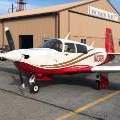Modern AOA disappointmentad
-
Members Online
- daytonabch04
- Yetti
- 1967 427
- Matthew P
- Oscar Avalle
- Jeff_S
- Meshach
- OneSaltyItalian
- Rick Junkin
- mooniac58
- 0TreeLemur
- Vulcan81
- Thedude
- PierreL
- WilliamR
- ProtoFly
- CL605
- CCAS
- georgewdean1020
- helipilot2
- Fly Boomer
- cliffy
- M20S Driver
- BeachLifeMoon
- Slick Nick
- exM20K
- IgorD
- Hank
- LANCECASPER
- FlyboyKC
- A64Pilot
- RangerM20
- Parker_Woodruff
- takair
- TCC
- FJC
- milotron
- Jayrod
- phrogpilot73
- GMBrown
- Jim F
- Fysiojohn
- blankc
- PaulM
- Mikey30V
- 201Steve
- dkkim73
- Sue Bon
- acekng1


Recommended Posts
Join the conversation
You can post now and register later. If you have an account, sign in now to post with your account.